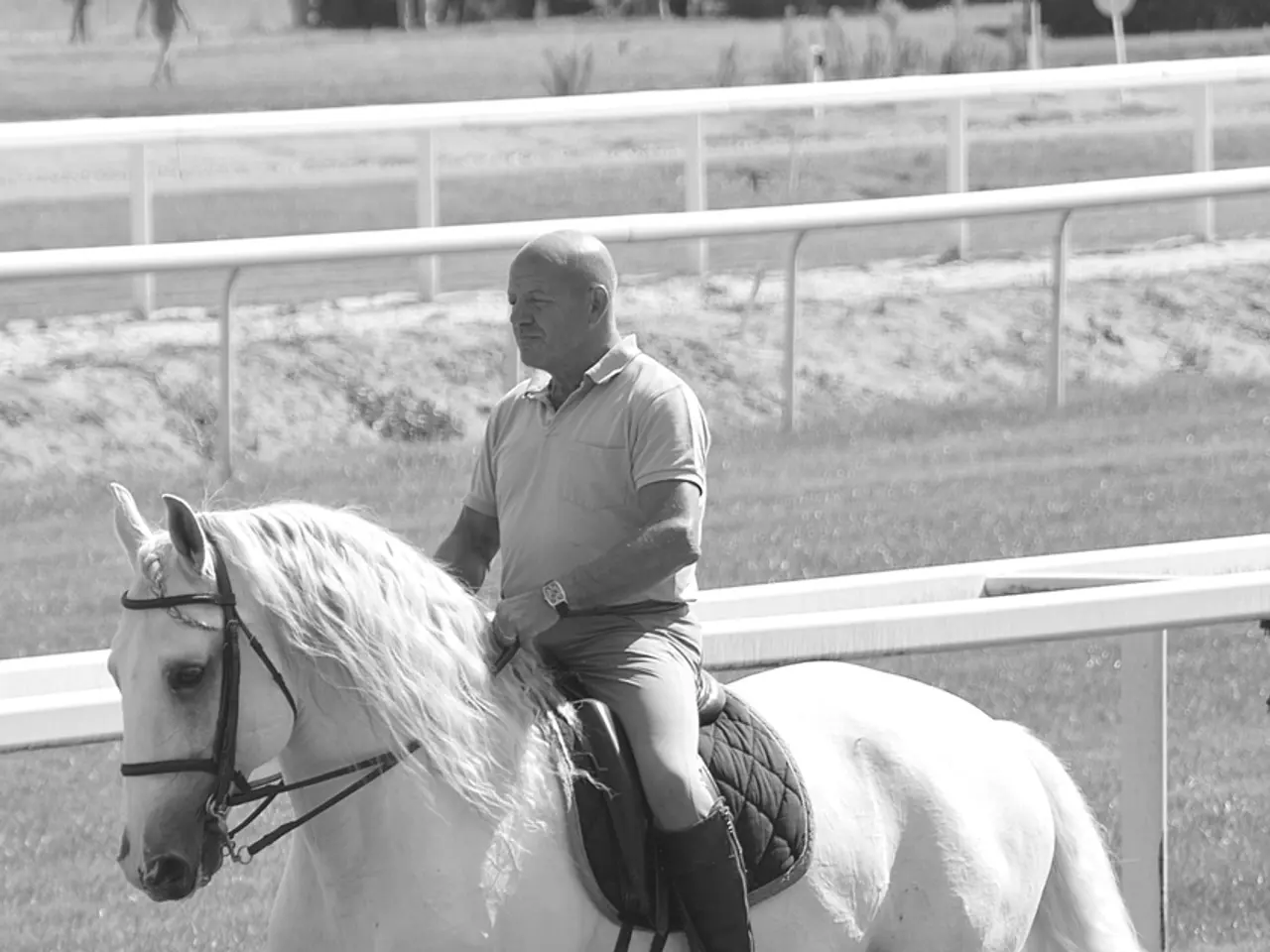Assessing the Physical Structure of Equines, Focusing on their Body Mass Distribution
In the realm of equine health, understanding muscle scoring and body condition is crucial for horse owners and operators. This article will delve into the essential aspects of muscle scoring for horses in work and muscle atrophy scoring for idle horses, as presented in Tables 2 and 3.
Firstly, let's familiarise ourselves with some key equine anatomy. The "tuber ischii," often referred to as the "point of buttock," and the "tuber coxae," or the "point of hip," are protrusions of the pelvis. The "dorsal" refers to the topside or back, while the "caudal" points towards the tail, and the "ventral" refers to the underside or belly side.
Body Condition Scoring (BCS) is a measure of fat cover and storage on the body. It's vital to determine BCS before muscle evaluation, as it provides an understanding of how much fat the horse is storing and where. Cresty neck scoring (CNS) is another measure of adiposity, focusing on where fat is stored in the body.
Muscle evaluation systems for horses are relatively new, and there are three main approaches: a system developed for dressage horses in work, the Muscle Atrophy Scoring System (MASS), and a simplistic approach focusing only on the topline of the horse. The topline evaluation system is a method used to gauge muscling, with scores ranging from A (ideal) to D (atrophied).
Over-conditioned horses are more likely to suffer from metabolic issues, heat exhaustion, poor performance, and joint problems. Conversely, under-conditioned horses are more susceptible to disease and heal more slowly from injuries.
General health observations can indicate a horse's diet is not ideal. These include low energy level, frequent colic, poor fecal quality, poor hoof quality, poor hair coat quality, tearing of the eyes, and subfertility.
The most important criteria for horse owners/operators when assessing overweight in horses are observing body condition scores, evaluating fat deposits at key points (neck, ribs, tailhead, and shoulders), monitoring overall health and mobility, and ensuring a balanced diet low in sugars and starches to prevent metabolic issues.
Factors other than diet that influence body weight include activity level, genetics, parasite load, metabolic issues, cardiac issues, cancer, other illness, and breed size. Knowing a horse's weight allows for more accurate calculations of nutritional requirements and drug dosages. Body weight can be measured using a scale, weight tapes, or a formula that uses body length (BL) and heart girth (HG) measurements.
"Palpation," the evaluation method that uses touch or feel, is also employed in muscle evaluation. Muscle evaluation is different from "condition" or fat storage, and horses that are energy deficient will break down their own muscle tissue to use as energy.
The authors of this article would like to express their gratitude to Josephine Shaya, Associate Professor of Classical Studies; Department Chair of Archaeology at the College of Wooster, for her insights on making the document more understandable and useful for horse owners without a background in animal science. They also thank Dan Rhodeback, Facility Manager, and Erica Kight, Herd Manager, of Ohio State's Columbus Campus Equine Facility for their perspectives on improving the document.
Lastly, it's worth noting that six areas are evaluated where horses store fat for BCS: neck, withers, back, loin, tailhead, and crest. The "greater trochanter of the femur" is a protrusion on the long bone in the thigh of the horse, and "spinal processes" are protrusions and wing-like projections of the vertebrae. The terms "cervical" refer to the neck, and "cranial" refers to the direction towards the head.
To aid in documenting all these areas and serving as a record to monitor change over time, an example body composition record is provided. This comprehensive guide aims to equip horse owners with the knowledge needed to maintain their horses' health and wellbeing.
Read also:
- Peptide YY (PYY): Exploring its Role in Appetite Suppression, Intestinal Health, and Cognitive Links
- Toddler Health: Rotavirus Signs, Origins, and Potential Complications
- Digestive issues and heart discomfort: Root causes and associated health conditions
- House Infernos: Deadly Hazards Surpassing the Flames








